It’s the mid-2000s, in Isaac Brock’s attic music room somewhere in Portland, Oregon. By 3 a.m., Johnny Marr and Isaac have written two songs. Johnny is jet-lagged—he arrived from England last night, intrigued to see how Isaac and Modest Mouse work—but he’s alert enough to realize he’s in love with a new guitar, Isaac’s ’63 Fender Jaguar. He brought a Tele with him, but that doesn’t seem to cut it with one of Isaac’s trio of gigantic Fender Super Six amps.
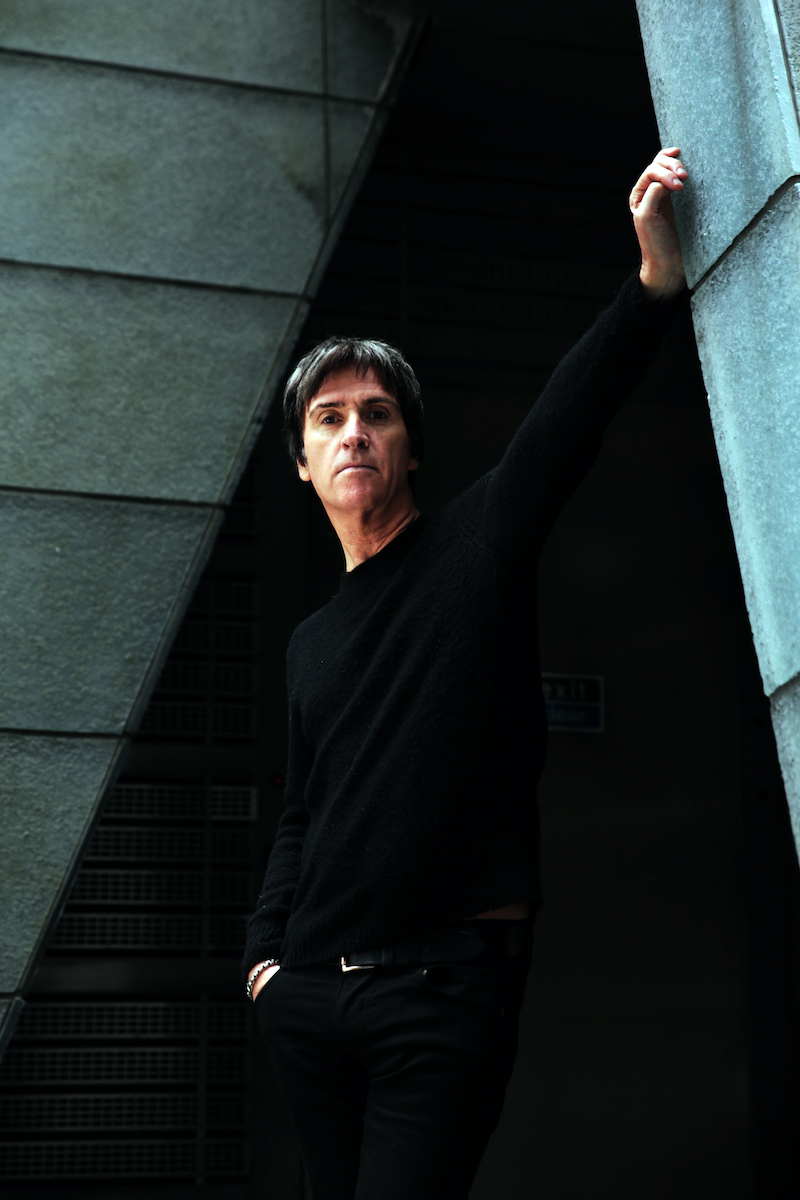
"Isaac had a rack of unusual guitars that I couldn’t really recognize," Johnny recalls. "The only one I did recognize was a Fender Jag. I said can I plug that in? I started playing this Jag, and I liked it straight away. By now well into his jug of wine, Isaac disappeared behind his amp and reappeared wearing an old Second World War flying cap and goggles, walked up to me, comes right in my face, goes: ‘Have you got any riffs!’ So, being particularly English at that point, I said: ‘Well, as a matter of fact, I do have one, and it goes something like this.’"
The riff and Isaac’s improvised lyrics gelled that night and became the 2007 Modest Mouse hit single, "Dashboard." There was just something about that Jag, Johnny says. "It made me play this riff in a certain way. And had it not been for me switching to that Jag, I wouldn’t have played it with quite the same kind of attack—it’s a very punchy riff. I wouldn’t have played it in quite the same way, I don’t think."
That sums up a trend Johnny has experienced a number of times over the years. "It’s that thing of a particular guitar bringing something out in me," is how he puts it. Keep it in mind, right now, because Johnny is about to take us on a tour of some of the key guitars that conjured "that thing" and qualified at various stages through his career as his go-to instruments.
Marr is on tour throughout the UK in April and May. Find all of the dates below or at johnnymarr.com.
Rickenbacker 330
"The first significant guitar was the black Ricky 330 that I had in The Smiths," Johnny says. Significant, because it’s the instrument that many people associate with him from those early days in the ’80s as the band began to take off. And it was a deliberate purchase.
"I got it to stop me playing in a sort of blues-rock style, or so that I would avoid these blues-rock cliches. Rickys just don’t lend themselves to that. I don’t think anywhere in history, maybe, are you hearing people playing them like that. The only person I think who made a really aggressive sound with Rickys—and I’m not talking Townshend aggressive—was Guy Picciotto in Fugazi, who used to get pretty interesting sounds out of them."
Johnny’s brand new 330 took care of a lot of the first year or so of his serious professional career. "Like most musicians of a certain age in Manchester, I got it from a shop called A1 Repairs, and I bought it with my first Smiths publishing advance. I bought that Rickenbacker for myself, an engagement ring for my girlfriend, a bass amp for Andy Rourke, and a drum kit for Mike Joyce."
He points to the band’s "Accept Yourself" as a good example of the new Ricky’s abilities. "That has like a Motown-y riff," he says, "and I just don’t think you would play that on a Strat, say, or a Gretsch. Then it goes through a load of major sevenths, these arpeggios. Maybe it’s just trying to be a Motown record through the prism of an indie band. And I guess sonically, the best example of that Ricky is ‘What Difference Does It Make.’ When you hear the intro to that, that’s my 330, tracked up."
The new Ricky did exactly what Johnny intended. It steered him to write in a certain way, or more accurately helped point him away from the cliches he wanted to avoid, in the process bringing an aspect of his playing to the fore. "Most singers like changes, chord changes. And you tend not to be too modal on a Ricky. It encourages chord progressions and harmonic changes and arpeggios—all those good things."
Gibson Les Paul Standard
In 1984, Johnny bought a new Les Paul, another purchase from A1 in Manchester, inspired in part because he loved the color of George Harrison’s Standard from the ’68/’69 Beatles period. "My red Les Paul is the guitar that’s on more records that I’ve done than any other guitar, by a mile," he says. "It’s on everything I’ve done. It’s my go-to for that thing that I think people think that I do all the time. Which I do a lot, but not exclusively," he adds with a laugh. "But I do think it makes me play that way—which might surprise a lot of people, with it being a Les Paul."
He added Seymour Duncan pickups, a coil-tap, and a Bigsby. He finds the coil-tap great when he’s doubling-up arpeggios. The usual trick is to double with a different guitar, for textural and sonic variation, but with this modded Les Paul he can just keep the same guitar on, flick the coil-tap, and dial in a different tone.
He outlines a further technique in doubling territory. "I’ll listen back to the first part in the left speaker, put it at quarter-to, then put the one I’m playing on the other side. But as a sonic trick, I’ll stand nearer to the left speaker, and my brain thinks that one, the playback, is the one I’m playing. It gets you 80 percent of the way there—your brain’s just going, ‘Oh, I’m coming out of that speaker,’ when in fact you’re coming out of the more distant one."
And the Bigsby? "Like a lot of guitar players, the look is very important, and I like the look of a Bigsby on a Les Paul. It’s quite unusual. I won’t lie: a lot of it was about how it looked. I’d written the song ‘Nowhere Fast’ on an Epiphone Casino with a Bigsby for a very ‘50s kind of thing. I also used that Casino for ‘How Soon Is Now,’ with just slide and amp trem—no Bigsby—for that eee-ow thing. Anyway, I didn’t want to take it out on the road, so I just thought well, I’ve got this new Les Paul, so I’ll put a Bigsby on that and be able to play ‘Nowhere Fast’ and a few of the other twangy things. That was my logic."
Among the Les Paul’s many appearances is the 2009 Cribs cut "We Share The Same Skies." Johnny came up with the riff on a Jazzmaster, but cut it on the red Gibson. "The band were excited that it was a very typical ‘me’ kind of riff," he says, "so I just thought OK, I’ll make it sound like I’m supposed to sound." Laughter again, here, at another recurring theme. "So I recorded it on the Les Paul. There’s a documentary online about the making of that album, and you can see me using that guitar quite a lot."
Fender Stratocaster
Back to A1 again, this time for a Strat. "I got my 1963 L-series white Strat in 1985, when we did ‘The Boy With The Thorn In His Side,’ which I wrote on that guitar. It had belonged to the guitar player in a Manchester band called Sweet Sensation, who had a hit in the ’70s with ‘Sad Sweet Dreamer,’ and he sold it to A1. I should have had shares in that bloody shop!"
The attraction of a white Strat harks back to Johnny’s first musical hero, Marc Bolan, who tended to flip between a Les Paul and a white Strat. "And yet again, this Strat made me play in a slightly different way. When I wrote ‘Boy With The Thorn,’ I really brought out that top-line melody—and because I was playing a Strat, I put more reverb on it."
More influences turned up from some of his other early Strat heroes, including Nils Lofgren (false harmonics) and Rory Gallagher (volume swells). He also liked what Rory said about life beyond electrics. "I grew up in the '70s, and maybe there’s young players now who grew up in the ‘90s and early 2000s and feel the same way, but I’m glad that I heard older musicians like Rory say that if you can’t play acoustic, you’re not a real guitar player. I’m glad that was put into my mind."
Back to our electric story, though, and those Nils-inspired false harmonics. Johnny found a thumb-pick helped with Strat harmonics in the studio, in the process bringing a kind of edginess to certain parts. "I did quite a bit in ‘Jealous Of Youth,’ a track with The The, which has all these bell sounds. Rather than do it as an octave thing, I was ignoring the left hand and—not exactly tapping—I was picking out the octave harmonic by using the thumb-pick."
Using the convenience of the Strat’s control layout for volume swells also felt easier still by again deploying that useful thumb-pick. "It frees up your hand," he says, "so your hand can go sort of wider. There’s the technique of swelling up and then engaging the whammy bar at the same time. I guess some people might think that’s Hendrix-y, but to me its best proponent is Jeff Beck. And I used to do that on quite a lot of records."
He earmarks "Unhappy Birthday" on the last Smiths album, where he and his Strat add some impressive wails. "That’s me picking the harmonics with the volume down, swelling it up, and then doing the bend. I use that a lot—the intro to ‘Money Changes Everything’ is the thumb-pick, strumming the chord, swelling it up, then hitting a little bit with the tremolo arm, with loads of delay on. So the Strat did facilitate a technique, and it brought music out. I wasn’t imposing my music on the guitar, the guitar was bringing out things. It was bringing out tunes, really."
Gibson SG Standard
Johnny reckons the SG was a big but not so well-known part of his evolution as a guitar player. He got into it as a result of a dip of his interest in contemporary guitar music during the late ’90s and early 2000s. This would change when he moved to Oregon in the mid 2000s.
"But living in England, I just thought the best stuff was either coming out of America," he says, "or had been done in the past. I began to get into the sound of John Mayall’s records, but not with Eric Clapton—I liked Mick Taylor on records like Bare Wires. Also, I got into what Pete Townshend was doing on Who’s Next and his live stuff around then, like the Isle of Wight concert. At the time, I just thought it was the best guitar playing that I was hearing—and Mick Taylor and Townshend were both playing SGs."
He bought an SG Standard from the Kings Road store in London, adding a Special later. "I always preferred the ’63 Standard," he says, "with the stock trem. It ticked so many boxes for me, and I really bonded with that guitar. It sounded dark, but not quite as dark as a Les Paul, this dark kind of sexy blues sound to it. And an SG is good for solos—just listen to ‘Slip Kid’ by The Who, just an amazing sound on that."
Another factor was that Johnny was singing with his band at the time, The Healers. "It was a good guitar to front a band with," he explains. "A Les Paul would have given me too much to take care of down there. The SG sat better on me, a little bit higher, so I didn’t feel like I was looking down—I was able to sing. Some guitars just aren’t frontman-friendly. And with the SG, I could play these big kind of clanging rhythms, and then switch to lead lines, which is what I needed in The Healers."
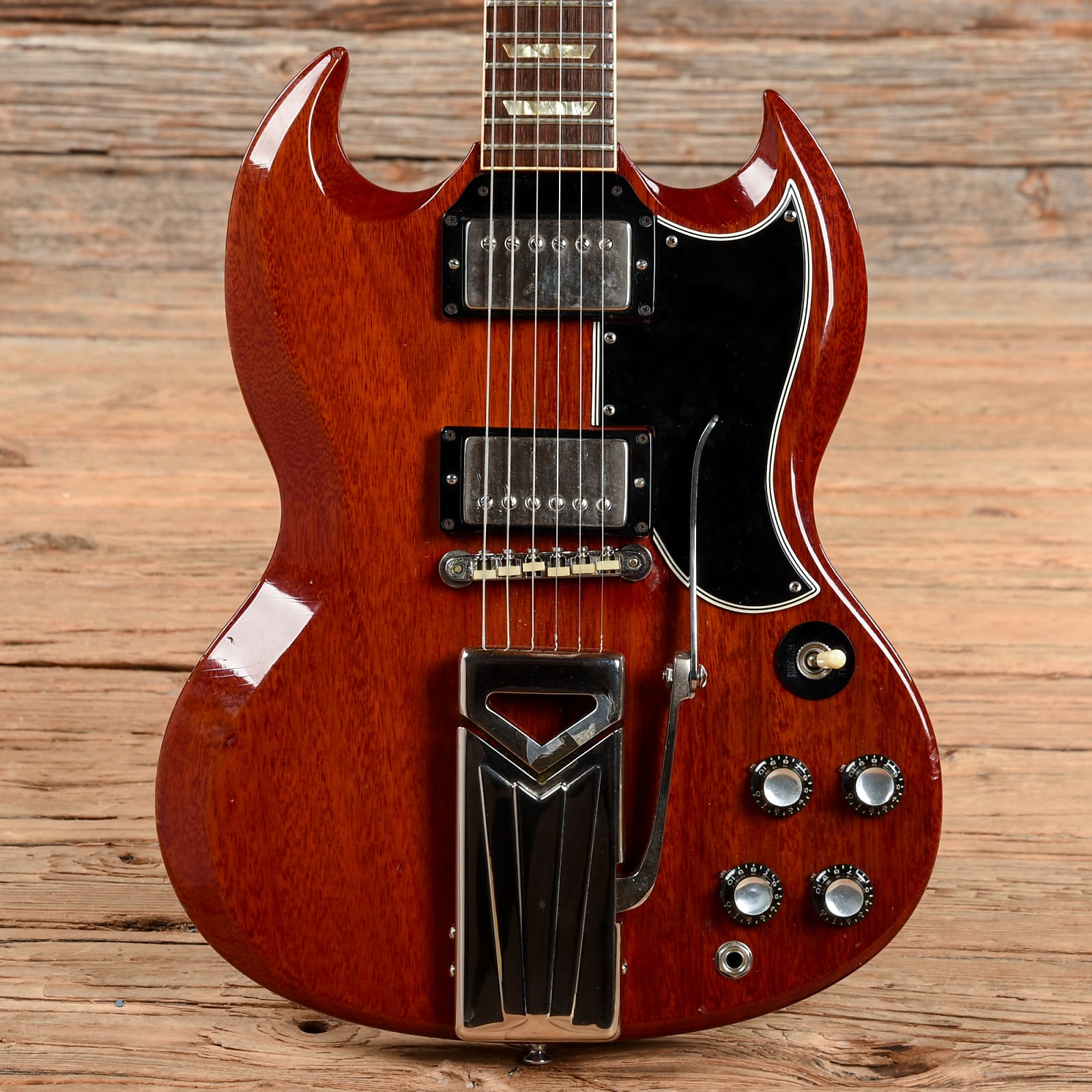
Disaster struck when the prized SG was stolen at a London gig in 2000. Johnny was distraught, and visited his friend Bert Jansch, the legendary acoustic stylist. "I thought I’d go over to see some wise elder who’ll really understand and give me some sympathy. I poured out my story, and he just said: ‘Have you never had a guitar stolen before?’ It was like a zen master, but I didn’t know whether to storm out or what."
There was a happy ending—but it took a while. Johnny was playing with The Cribs in Toronto in 2010 when his manager called up, said a policeman new to the job had been in touch. He was a fan, and he wanted to reopen the case. So Johnny would need to fill out a new police report.
"I was like, Oh man, this is torture. Even though it was so long after the event, I’d only just got over it. But I filled out the report. And within about four or five weeks, that policeman found my guitar. I got it back, 10 years later! The guy that stole it still had it. It came back fucked, but at least I got it back—and by then I had a replacement, made within a few months of the stolen one. Since then, there’s a thing that happens occasionally with layering on records, or I need something for a certain part, and if I decide that it’s the SG, it always delivers."
Fender Jaguar
"Without getting too dramatic about it," Johnny says with a smile, "getting my 1963 Fender Jaguar was a big thing in my life." We need to revisit that Portland attic with Isaac Brock and his rack of unrecognizable guitars. Apart from one.
It was Elliott Smith who turned Johnny on to Modest Mouse. "Like most musicians, we were sharing our enthusiasms," he recalls, "and that’s one of the things that makes me proud of my profession, among my brothers and sisters. When we meet, we say have you heard, have you met, have you tried—all this, you know?
"Anyway, Elliott mentioned Modest Mouse, and I checked them out, thought they were an intriguing band. I liked that I couldn’t quite work out what they were doing and where it was coming from. I got into The Moon & Antartica, thought it was a great album. Then I got this call that Isaac Brock wanted to talk, and I ended up visiting him after we thought we might write some songs together."
The Tele Johnny brought with him failed to inspire, but right there in Isaac’s rack was the significant Jaguar. "The second song we wrote that night became ‘We’ve Got Everything,’ and that is really to do with the Jag," he says. "That guitar made me play completely different to the way I was playing then. I knew this Jag had a real liveliness to it, that you had to really pay attention. The scale length adds to the way a Jag is set up and the feel of it, making for quite a bouncy, lively thing. That night made me realize what an exciting guitar a Jag can be."
Isaac said he’d never got on with the Jaguar, and Johnny asked if he wanted to sell it. "He went, ‘Yeah, sure, I’ll sell it to you.’ And I thought: OK, you’re gonna regret that tomorrow morning." But true to his word, Isaac’s Jag passed to Johnny. And Johnny joined Modest Mouse in 2003, working with them for around six eventful years.
The ’63 Jag does what his old Gretsch used to do for him, what with its trem and its big bell-like tone. "It also does what a Rickenbacker does, in that it can be quite glacial, sounds very clean, and cuts through the mix very well—it really does that 3k thing. And it does pretty much what a Strat can do, without the middle pickup, which I wasn’t using anyway on a Strat. So it’s like a cross between a Ricky, a Gretsch, and a Fender. And it would have saved me so much money in The Smiths," he laughs. "So yes, the Jaguar would bring out this thing in me, and a thing that was always part of what I was doing. But I really embraced it because of the Jag."
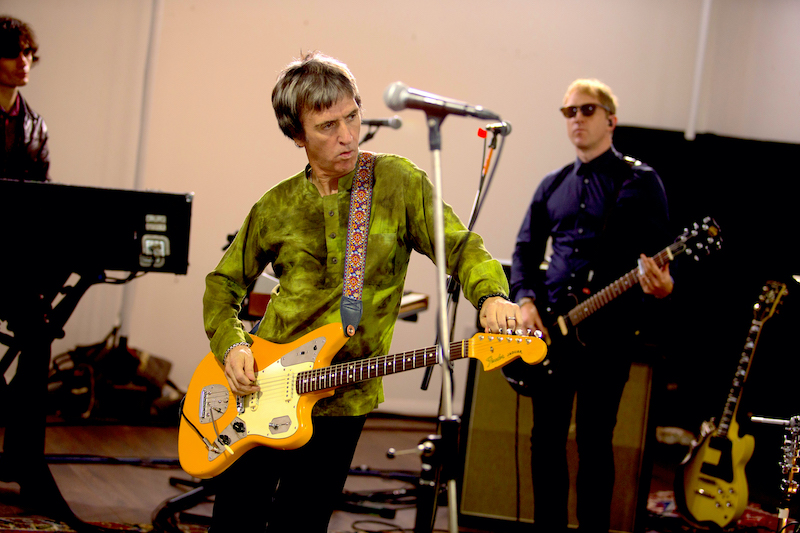
He says his newly-discovered Fender was part of a perfect storm. "I was at a point in my life where, personally, I was going in a new direction. I was getting very fit, I was getting into running, I packed in drinking and smoking weed in the morning, all that kind of stuff. It was a new chapter in my life, psychologically. And then this new partnership came as I joined an American band. And a big part of it was I got into Jazzmasters and Jaguars."
Fender Johnny Marr Jaguar
Fender introduced its Johnny Marr Signature Jaguar in 2012, and Johnny says he’s well aware how fortunate he was to be presented with such an opportunity. The model had its origins as he calmed down from the first rushes of excitement as he discovered the potential of a Jaguar. He began to grasp that original Jags have what he calls unwanted conditions. And so, with some colleagues, he gradually put together a knock-up Jag as an experimental testbed for improvements.
First, he reasoned that a facility to switch both pickups on and off was completely unnecessary these days. "I elected to get rid of those two on-off switches on the lower plate, and move the hi-pass filter up to the top plate. That left the lower area free, and I put a Telecaster-style switch there, to keep it in the Fender realm. I didn’t want to mess with the aesthetic too much. I wasn’t sure if that would be weird or not, but it turned out to be great. There was room for it to be a four-way, which gave me the opportunity to make the pickups in series as well as parallel, if I wanted, giving it an extra sound you don’t normally get on a Jag."
Another of Johnny’s unwanted conditions in original Jags was the tendency to movement in the bridge. "I’d be messing around with an Allen key in rehearsals and before I went on stage, and with The Cribs, I got so OCD about it I was doing that in between numbers on stage." So that had to be fixed. After trying all manner of complex ideas, the solution turned out to be relatively simple: fatter screws sitting in nylon bushings, preventing any inclination to spin around.
A similar solution worked for an unwanted trem condition. "Another thing that happened with ‘60s Jags is that the trems swing around all over the place if they’re not fitted in right," Johnny says, "and that was a great source of annoyance to me. We tried locking trems, angled trems, and one time with The Cribs, I was out on stage, looked down at the latest modified trem, and I thought: Why have I got a Victorian tap on my guitar?"
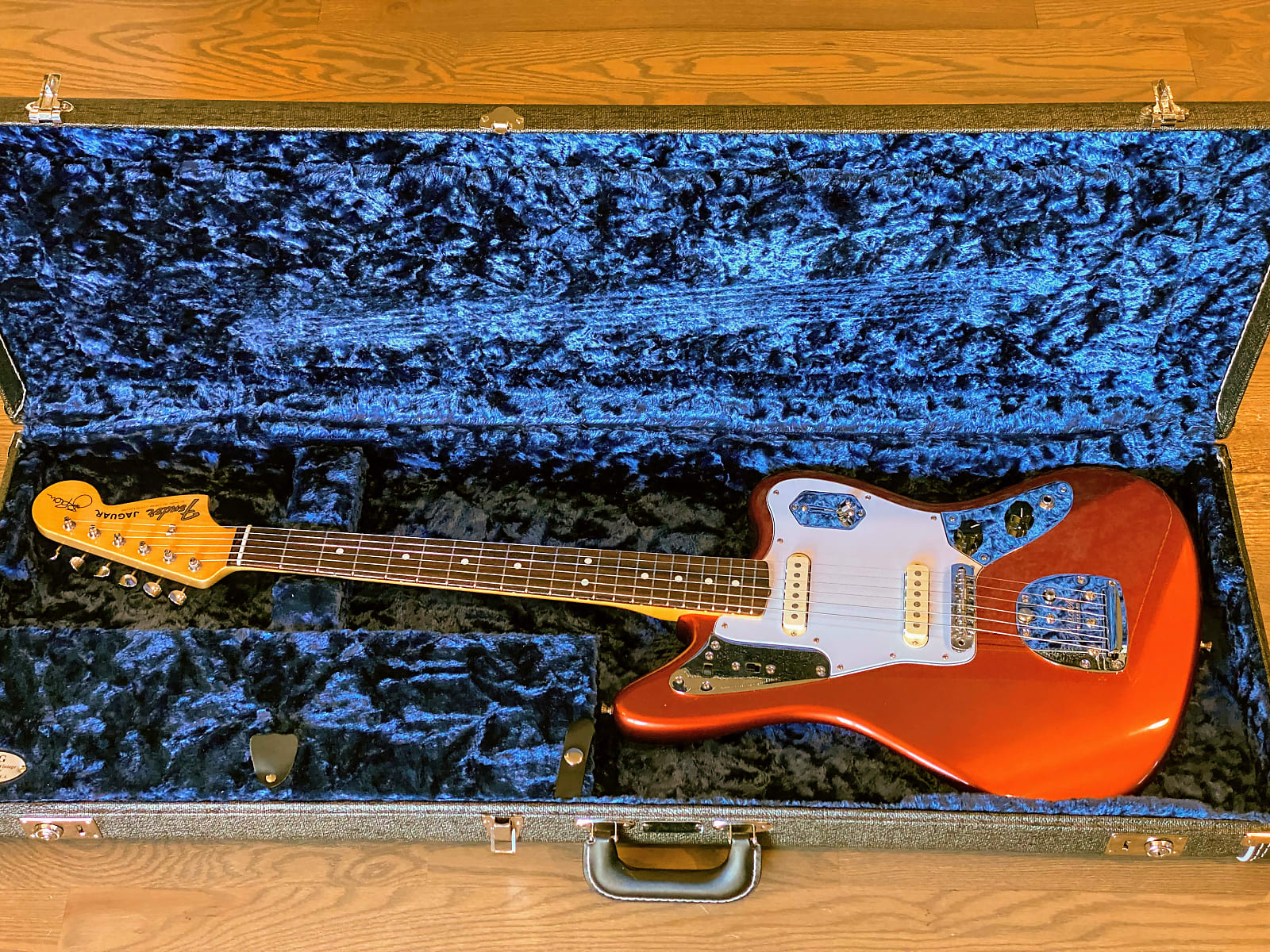
But as so often in engineering, the best and most elegant solutions can be the simplest. "Just as with the bridge screws, after trying all this clever shit, we put in this little nylon-sleeve insert, so that when you pull the arm out, it goes," and here Johnny makes a convincing arm-out pop, "so it just keeps the trem wherever you want it."
Fender got to hear about this developmental Jag that was taking shape. "They offered to make it into a signature guitar," he says. "What we agreed was that I would make this guitar—with a fair amount of obsessive-compulsive disorder—and then deliver it to them as my perfect Jag. They said, ‘Great, you do that, and we’ll just make it.’ Fender were absolutely true to their word. They even let me outsource the pickups and have them made by Bare Knuckle in the UK. They made it so that every one of my signature Jags is exactly the same as mine. And it’s been very, very successful, which makes me really proud."
For Johnny’s upcoming tour highlighting the work on his new Fever Dreams album, he’s taking out four of them: a main one, plus backup, and a secondary one fitted, with thanks to his good friend Ed O’Brien, with a Fernandes Sustainer, plus a backup of that. The Sustainer solved a problem with the practicality of using (and trashing) EBows on stage. And when we spoke, he was considering taking also a recent SG 12-string. But it’s those signature Jags that are at the heart of present-day Johnny Marr.
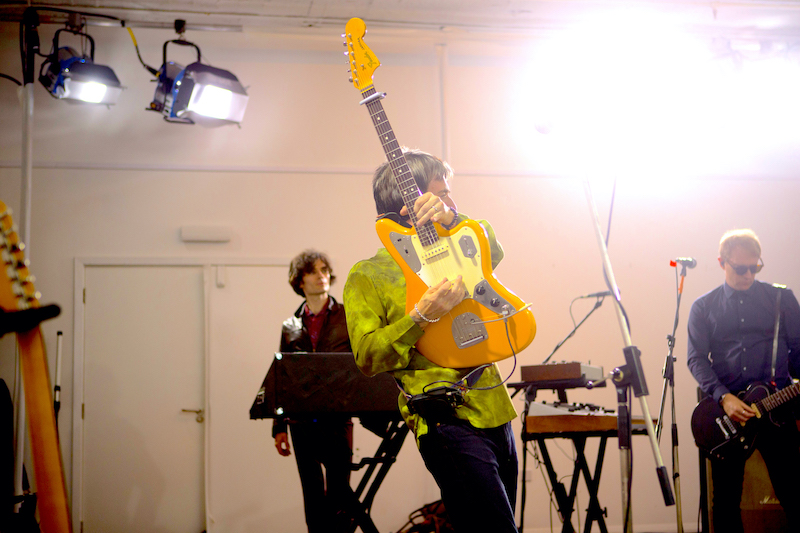
"Let’s put it this way," he says. "I’ve got a few old Jaguars, and if I was asked to guest with someone, which sometimes happens, in my house I’ll have like a beautiful, beat-up, great old ‘60s Jag knocking around. But I’m not going to take that out to the Apollo to go and play with The Cult, say, like I did a few years ago, because something might go wrong with it. I’m going to take my signature Jag every time. I think that tells its own story."
It’s nothing to do with the fact that the sig Jags have his name on the head. "In fact, on my guitars, the first thing I do is take my name off the end of it. There’s something just a bit too vain about that." And, of course, you know very well whose guitar it is. "Good point," he says, laughing. "But it’s just more reliable. I know it does everything the ‘60s ones do, but better."
Johnny Marr’s new double album Fever Dreams Pts 1-4 is out now via BMG. Johnny Marr will perform live across a UK arena tour with Blondie beginning April 22 at Glasgow's SSE Hydro. Tickets and details of later US dates at johnnymarr.com.
April Tour Dates
- Tue 19 Foundry, Sheffield
- Wed 20 Students Union, Northumbria University
- Fri 22 The SSE Hydro, Glasgow (with Blondie)
- Sat 23 Motorpoint Arena, Cardiff (with Blondie)
- Mon 25 Pryzm, Kingston-Upon-Thames (with Banquet Records) SOLD OUT
- Tue 26 The O2 Arena, London (with Blondie)
- Thu 28 The Brighton Centre (with Blondie)
- Fri 29 Bonus Arena, Hull (with Blondie)
May Tour Dates
- Sun 1 AO Arena, Manchester (with Blondie)
- Mon 2 Liverpool M&S Bank Arena (with Blondie)
- Wed 4 First Direct Arena, Leeds (with Blondie)
- Thu 5 Motorpoint Arena, Nottingham (with Blondie)
- Sat 7 Birmingham Utilita Arena (with Blondie)
About the author: Tony Bacon writes about musical instruments, musicians, and music. His books include Electric Guitars: Design & Invention and Legendary Guitars. Tony lives in Bristol, England. More info at tonybacon.co.uk.
